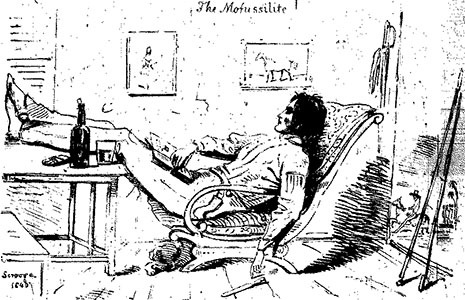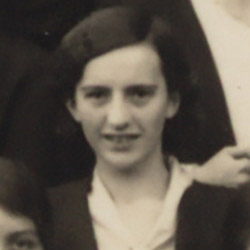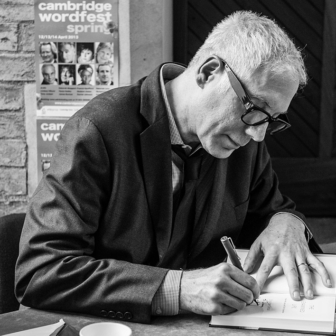The Undergraduate
John Lang | Mulini Press
ONE of the more intriguing publishing ventures of recent years is the John Lang Project, the baby of Canberra’s Mulini Press. If you don’t know who John Lang was, and I didn’t till a few weeks ago, then you may be interested to repair this omission. His publishers claim him to be the first Australian-born novelist, his short life spanning the years 1816–64.
Lang was born in Parramatta to a Scots father and an Australian-born mother, was educated in Sydney – where he proved to be a scholar especially gifted in Latin and Greek, receiving Sydney College’s first gold medal “in approbation of his talents, acquirements and general good conduct” – and then spent time at Trinity College, Cambridge, in the late 1830s. This latter experience is the obvious source of his novel, Passages in the Life of an Undergraduate, published in 1846 as a serial in the Mofussilite, the newspaper he ran while living in Calcutta in the early 1840s, and subsequently in book form. Apparently only one copy of the book survives from this first edition and it is held in the British Library. It has now been republished in Australia by Mulini, with a black-and-white sketch of Trinity College gate on the cover.
The aim of the Press is to publish all of Lang’s novels, some of which have only appeared as serials in the Mofussilite. Several of his novels – and he wrote poetry and travel books as well – were published in England in the mid nineteenth century, but he undoubtedly has a place in the story of Australian writing and the Lang Project should be encouraged. Although there’s an entry on Lang in The Oxford Companion to Australian Literature, he doesn’t get a mention in The Oxford Literary History of Australia, whereas one would suppose his “firstness” would have been worth notice.
Lang’s writing and its publication seem to have been divided among England, India and Australia, but his first poems, novel and stories were published while he was still living in Sydney, and there is a substantial enough body of Australian-based work for him to warrant some attention. His Australian work includes Legends of Australia, published anonymously in 1842 in four parts, Botany Bay, or True Tales of Early Australia, variously published in England in the 1850s (both books republished by Mulini in 1989), and The Forger’s Wife (1855).
The Undergraduate, drawing on his experiences at Cambridge and in London, is set wholly in England, but it was never published there. As Victor Crittenden’s introduction to the new edition suggests, “Perhaps English publishers were wary about the depiction of the back-biting and manipulation of politicians at the time.” He adds that the novel sold well in India, where it may have struck responsive chords of nostalgia in the Anglo-Indian population. Its picture of university and political life in the 1830s is certainly not a flattering one, and Crittenden wonders if there might also have been some danger of libel at the time, even if the content hardly seems contentious in our more libertarian days.
The novel opens with the arrival of Charles Canter at Cambridge in 1835. He comes from what seems an exemplary middle-class background, with Rugby for his public school, a “popular bishop” for a great-uncle and a mother who hopes Charles will in time become an “ornament to the church.” For a short time, then, one expects Canter to be the novel’s protagonist. But no. His time at Rugby connects him to one Peter Crawley, who has rooms immediately below Canter’s in their Cambridge college, and Crawley quickly takes centre stage in the novel. Unlike the conscientious Canter, Crawley has a tendency to indolence and extravagance, and his large inheritance as a result of his father’s untimely death gives him the means to indulge these unfortunate character traits. Canter recognises Crawley as a senior from his Rugby days but Crawley doesn’t remember him; contact is only made when Crawley objects to Canter’s violin-playing.
Crawley, who is personable and intelligent enough but radically lacking in moral sense, is in no way a good influence on Canter. Yet it sometimes seems that Lang is seeking from his readers more approbation for Crawley than any of his behaviour might warrant. He tricks fellow students – including Canter and another student, Gordon – into supporting him in his duplicitous ways, is “rusticated” from Cambridge, where the dean very properly has it in for him, marries twice and behaves badly towards both his wives, loses immense sums of money at cards, searches for patronage to advance a shaky career (in politics and, later, the law), and neglects his small son by his first wife when she dies. Back in Cambridge for the election of the high steward of his former college, but never having taken his degree, “He felt that he had wasted his time – lost golden opportunities – and was a cipher where he ought to have cut a very different figure.” In this way Crawley is contrasted with his old friend Gordon, who had grown to hate Crawley for, as he saw it, taking a position with Lord Greystock in London that Gordon felt to be his by right of inheritance. Gordon, though, has done “well in office, and was in high spirits” when they meet again in Cambridge, and a wild scene in “Hall” ensues.
Yes, there’s a lot going on in The Undergraduate, as it traces the career of one “not wholly bad – but good by nature... a mind equal to anything at which it might aim – and which mind had achieved nothing.” This authorial comment is typical of what some will see as a weakness in the novel: the intervention of the author in breach of Henry James’s famous dictum for novelists, “Dramatise, dramatise.” And in general, as a result, I find The Undergraduate more interesting as a curiosity than as an example of the novelist’s art in the middle years of the nineteenth century.
It is also true to say that Lang’s characterisation is apt to be shadowy, perhaps another result of not subscribing to the Jamesian tenet. He tends to tell us about his people rather than letting them emerge from what they say and do. He is writing several decades after Jane Austen has set new standards for novelistic realism, and is roughly contemporaneous with Maria Edgeworth and Elizabeth Gaskell, who both now feel a good deal more “modern” than he does in the comparative unobtrusiveness of the author’s voice. None of these three feels as much need to spell out what the reader’s response should be to her characters. It must be said that for the most part the inner lives of Lang’s large cast of men and women don’t emerge with the sort of clarity that would fix them in our minds. The exception is Crawley himself, whose contradictory attributes are realised with a vivid particularity, though there is a quite poignant contrast effected between gentle Annie, the first wife, and the redoubtable widow, Mrs Orford, who becomes Mrs Crawley number 2 and gives him more of a run for his money. Or for her money, to be exact, as he increasingly comes to rely on her to fund his aspirations.
As the narrative moves among the institutions of the University of Cambridge and its colleges, then makes its way to London where Crawley seeks preferment on the periphery of political life and diversion in London clubs, there is a whiff of the real in Lang’s rendering – not so much a matter of physical reality as of what they offer in the way of an ambience for a lying, cheating, sometimes engaging protagonist.
The present edition is quite handsome, though the publisher might have expunged the typographical errors and the pointless use of quotation marks for innumerable perfectly ordinary expressions. Perhaps these are both to be found in the original text, but it seems to me that an editor engaged in resuscitating a forgotten author ought to feel free to tidy him up so as to present him in the best light for his putative readership. That said, there is every (scholarly) reason for supporting an enterprise of such significance in Australian literary history as the republishing of Lang’s fiction. It represents what someone born in the very early days of this country made of his experiences here and elsewhere. •




